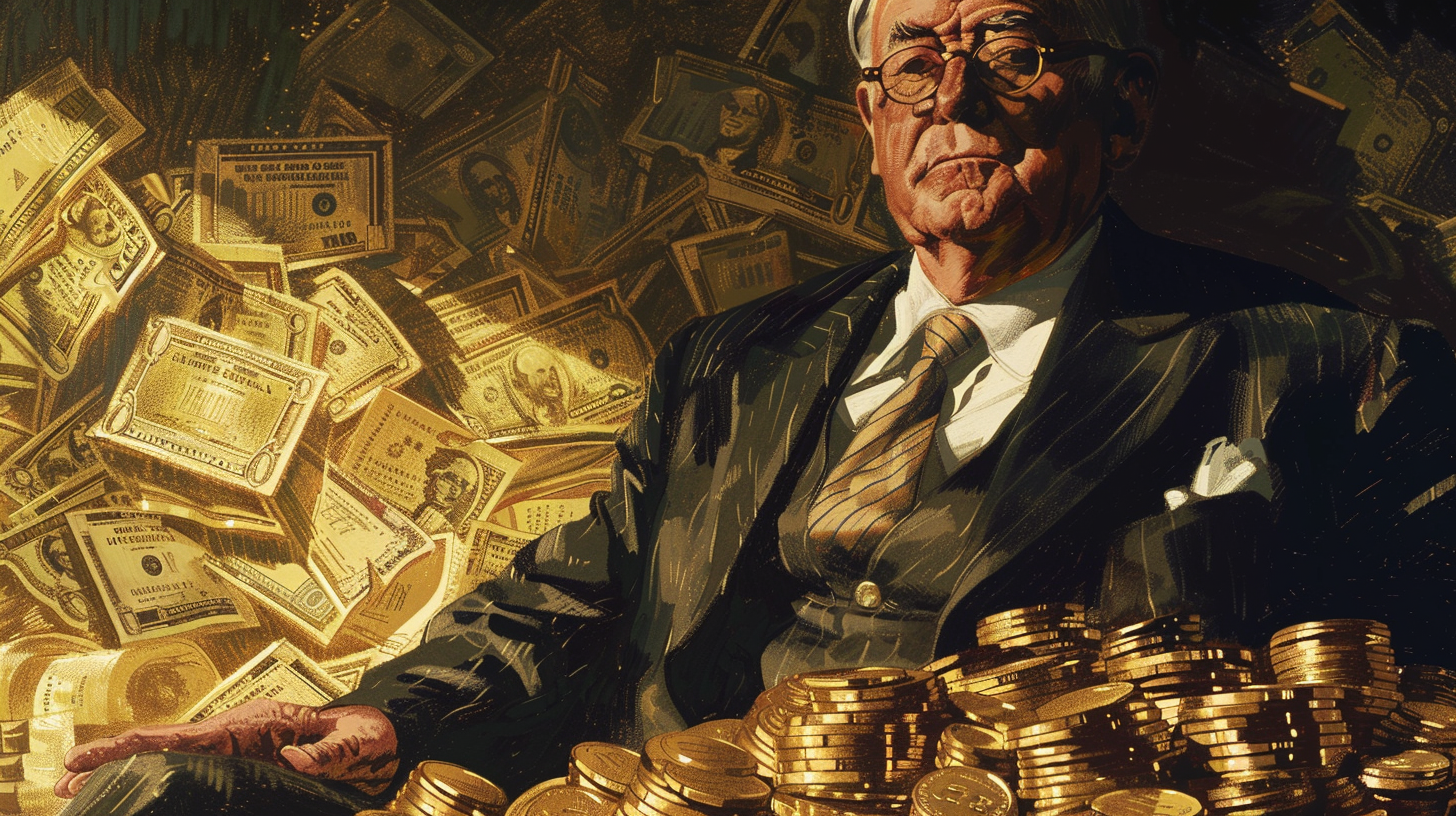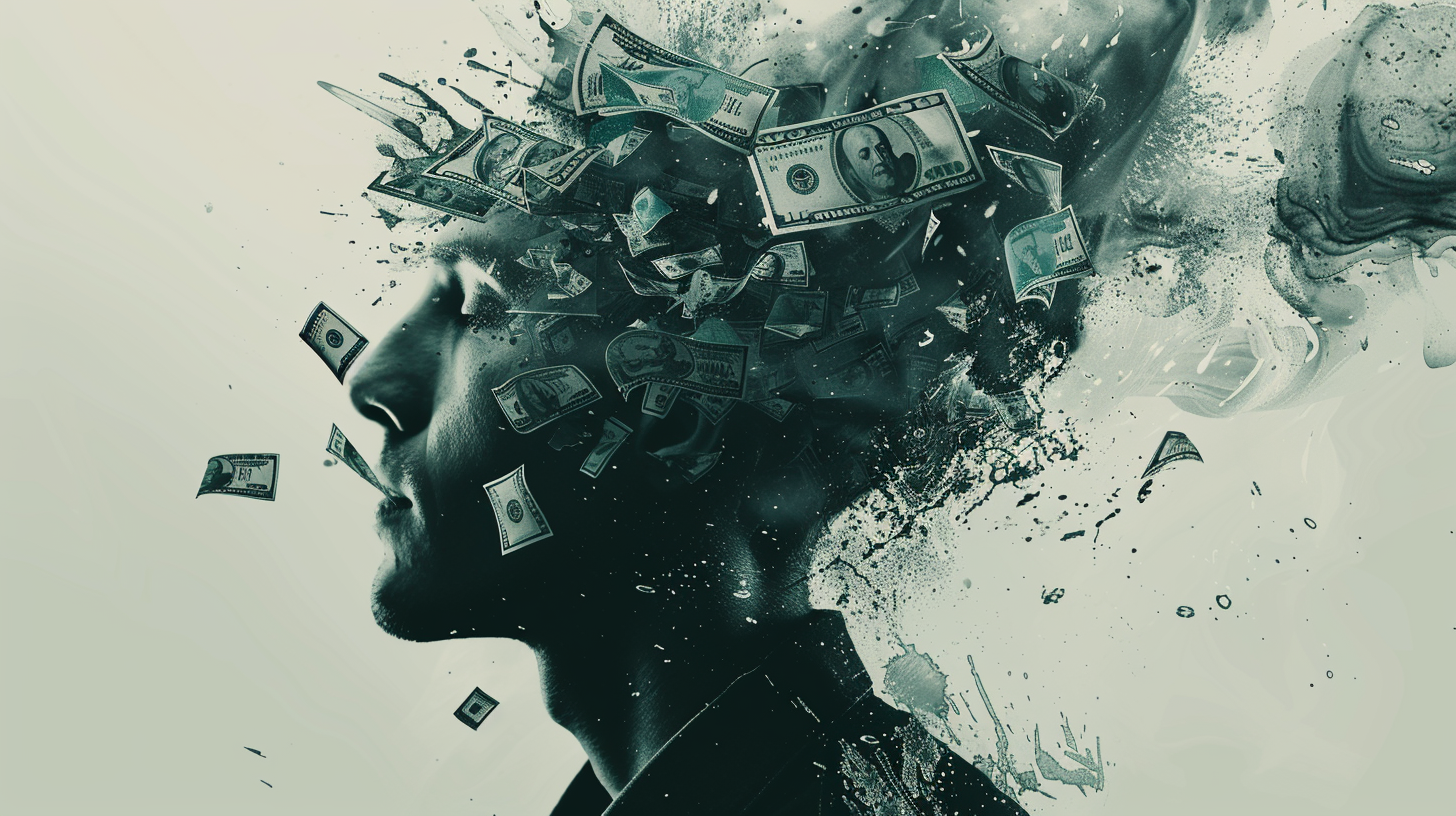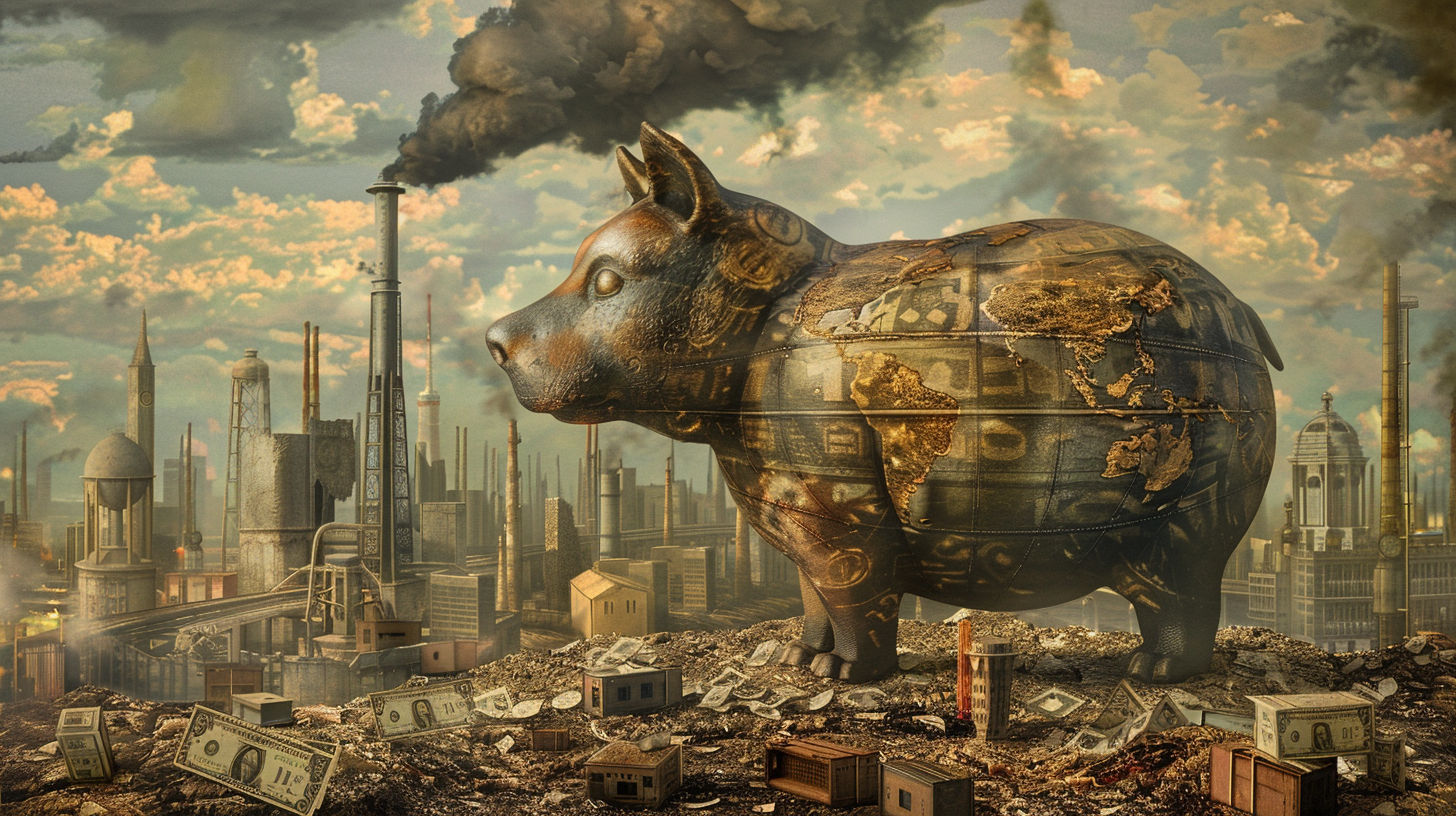The Government Can’t Stimulate Us to Prosperity
The economy is booming again – or so we’re told. Trillions in stimulus have juiced consumption and created the illusion of prosperity. But in truth, Americans are simply spending printed money on stuff they didn’t produce. Peter Schiff recently said America’s consumption economy is really a bubble
The problem is, economies can’t run on consumption. A vibrant, healthy economy needs production. Stimulus does nothing to boost production. In fact, it completely warps the production structure
Economist Frank Shostak asks the key question: Why should an increase in the overall demand be followed by the increase in the production of goods and services?
He answers his own question explaining how monetary pumping does nothing but create bubbles and undermine the long-term strength of the economy by discouraging real savings – the key to future production.
![]()
The following article by Frank Shostak was originally published by the Mises Wire. The opinions expressed are the authors and don’t necessarily reflect those of SchiffGold or Peter Schiff.
As a result of the recent stimulus policies employed by the US government and the Fed, most commentators are of the view that the risk of a deepening slump in the US economy on account of the covid-19 pandemic has now receded.
Some other commentators are not so certain that the risk has declined, arguing that the economy is still heading towards difficult times ahead. These commentators are of the view that to prevent the possible economic difficulties ahead authorities should continue with easy fiscal and monetary policies until the economy safely placed on the trajectory of stable economic growth.
Most commentators are of the view that by failing to act swiftly, authorities are running the risk of raising the cost of an economic slump in terms of idle or unutilized resources such as labor and capital.
This way of thinking is succinctly summarized by Ludwig von Mises in Human Action,
Here, they say, are plants and farms whose capacity to produce is either not used at all or not to its full extent. Here are piles of unsalable commodities and hosts of unemployed workers. But here are also masses of people who would be lucky if they only could satisfy their wants more amply. All that is lacking is credit. Additional credit would enable the entrepreneurs to resume or to expand production. The unemployed would find jobs again and could buy the products. This reasoning seems plausible. Nonetheless it is utterly wrong.
Conventional thinking argues that boosting the overall demand for goods and services is going to strengthen the supply of these goods and services—demand creates supply.
However, why should an increase in the overall demand be followed by the increase in the production of goods and services? This requires a suitable production structure that is going to permit the increase in the production.
Saving vs. Wealth
To maintain their life and well-being, individuals require access to consumer goods. What allows the increase in the production of these goods is the enhancement of the infrastructure of an economy. With better infrastructure, a greater quantity and a better quality of consumer goods can be generated—more wealth can be produced.
The enhancement and the maintenance of the infrastructure become possible because of the availability of consumer goods that sustain the life and well-being of the various individuals that are busily expanding and maintaining the infrastructure.
Observe that it is the producers of consumer goods that pay various individuals that are engaged in the maintenance and the enhancement of the infrastructure. The producers of consumer goods pay these individuals, i.e., the intermediate producers, out of the saved or unconsumed production of consumer goods.
Note that when a producer of consumer goods decides to save more (i.e., to consume less), the decline in his consumption is offset by the increase in the consumption of individuals that are engaged in the intermediate stages of production. This means that overall consumption is not declining because of an increase in saving—as popular thinking has it.
Again, what keeps the flow of economic activity going is the fact that the producers of consumer goods—the wealth generators—invest part of their wealth in the expansion and the maintenance of the production structure. This permits the increase in the production of consumer goods.
Since real savings enable the production of capital goods, real savings is obviously at the heart of economic growth that raises people’s living standards. In addition, once there has been a sufficient increase in the pool of real savings, people may aim at enhancing their well-being by seeking other things such as entertainment and services-related products—such as medical treatment et cetera.
Observe that the saved consumer goods support all the stages of production, from the producers of consumer goods and services down to the producers of raw materials and all other intermediate stages.
Idle Resources Emerge Because of Central Banks’ Policies
Commentators who advocate monetary pumping to absorb idle resources have overlooked that these resources have become idle because of the previous boom brought about by the prior loose monetary policy of the central bank.
As a result of the previous loose monetary stance, various nonproductive or “bubble” activities emerge. These activities rely for their continued existence upon the maintenance of loose monetary policy, which enables the diversion of real wealth from wealth generators towards bubble activities.
A tighter stance of the central bank stops this diversion, thereby reducing the number of bubble activities and ultimately strengthens the process of wealth generation.
According to Mises in Human Action,
Out of the collapse of the boom there is only one way back to a state of affairs in which progressive accumulation of capital safeguards a steady improvement of material well-being: new saving must accumulate the capital goods needed for a harmonious equipment of all branches of production with the capital required. One must provide the capital goods lacking in those branches which were unduly neglected in the boom. Wage rates must drop; people must restrict their consumption temporarily until the capital wasted by malinvestment is restored. Those who dislike these hardships of the readjustment period must abstain in time from credit expansion.
Mises continues,
If commodities cannot be sold and workers cannot find jobs, the reason can only be that the prices and wages asked are too high. He who wants to sell his inventories or his capacity to work must reduce his demand until he finds a buyer. Such is the law of the market. Such is the device by means of which the market directs every individual’s activities into those lines in which they can best contribute to the satisfaction of the wants of the consumers.
Any attempt to “revive” economic activity by means of loose monetary policy will resume the diversion of real savings from wealth generators to non–wealth generators, thereby weakening the process of real wealth generation.
Aggressive monetary policy while the pool of real savings is declining is likely to deepen an economic slump
As long as the pool of real savings is still expanding, this maintains the illusion that easy monetary policy “works,” the central bank policies will appear to be working.
Once, however, the pool becomes stagnant or declining the “music stops” and no amount of central bank monetary injection is going to “work.”
On the contrary, the more aggressive the central bank’s stance in attempting to revive the economy the worse things will get.
One could argue that irrespective of the reasons for the emergence of idle resources, the role of authorities and in particular, the central bank is to pursue policies that will make it possible for a greater use of these resources.
We suggest that the employment of resources requires an expansion in the pool of real savings to engage those resources. Without this increase, there will not be sufficient means of the employment of idle resources. A loose monetary policy that is aimed at boosting demand will not do the trick, for an increase in demand cannot replace real savings that are required to employ such resources.
Some commentators are of the view that easy monetary and fiscal policies are likely to boost overall demand, which in turn is going to raise the production of goods and services. As a result, the increase in economic growth is going to generate the required funding. The problem with this argument is that demand does not generate supply automatically; there must be first an adequate amount of real savings to enhance the infrastructure, which in turn will permit stronger economic growth.
Loose monetary policy, a solution recommended by many experts to prevent the emergence of idle resources, will only appear to be “working” as long as the pool of real savings is expanding. Once this pool starts declining, the illusory nature of loose monetary policy becomes visible. Only then does it become clear to most individuals that it is not possible to create real economic growth, i.e., the expansion in real wealth by means of the expansion in the money supply.





 As fiscal imbalances persist, driven by coercive measures and artificial currency creation, the middle class faces erosion and purchasing power dwindles. But as the world hurtles towards a potential reckoning, the lingering question remains: can this precarious balance last, or are we teetering on the brink of a cataclysmic economic shift?
As fiscal imbalances persist, driven by coercive measures and artificial currency creation, the middle class faces erosion and purchasing power dwindles. But as the world hurtles towards a potential reckoning, the lingering question remains: can this precarious balance last, or are we teetering on the brink of a cataclysmic economic shift? Beneath the veneer of headline job gains, the American economy teeters on the brink: native employment dwindles as part-time and immigrant jobs surge. Government hiring camouflages looming recession warnings. Inflation and political blunders worsen the crisis, fueling public outrage at the establishment’s mishandling of the economy.
Beneath the veneer of headline job gains, the American economy teeters on the brink: native employment dwindles as part-time and immigrant jobs surge. Government hiring camouflages looming recession warnings. Inflation and political blunders worsen the crisis, fueling public outrage at the establishment’s mishandling of the economy. On April 5 1933, Franklin D. Roosevelt abandoned the gold standard, wielding questionable legal power amidst America’s dire economic depression. His whimsical approach to monetary policy, including coin flips and lucky numbers, unleashed unprecedented inflation and price increases that have since amounted to nearly 2500%. Our guest commentator explores this tragic history and the legacy […]
On April 5 1933, Franklin D. Roosevelt abandoned the gold standard, wielding questionable legal power amidst America’s dire economic depression. His whimsical approach to monetary policy, including coin flips and lucky numbers, unleashed unprecedented inflation and price increases that have since amounted to nearly 2500%. Our guest commentator explores this tragic history and the legacy […] Welcome to the world of modern economics where the term “inflation” no longer signifies the increase in the quantity of money, but has evolved into a plethora of buzzwords. From “shrinkflation” to “greedflation,” these new terms and semantic shifts are by no means harmless but a manipulation of popular sentiment. Von Mises said they play […]
Welcome to the world of modern economics where the term “inflation” no longer signifies the increase in the quantity of money, but has evolved into a plethora of buzzwords. From “shrinkflation” to “greedflation,” these new terms and semantic shifts are by no means harmless but a manipulation of popular sentiment. Von Mises said they play […] Assuming CPI measurements are not understatements, the dollar’s value has plummeted by a staggering one-fifth since 2020, yet, rather than acknowledging its role in fueling this economic turmoil, the Biden administration deflects, casting capitalism and corporate greed as the villains. The latest February CPI data show more signs of the upcoming inflation bloodbath.
Assuming CPI measurements are not understatements, the dollar’s value has plummeted by a staggering one-fifth since 2020, yet, rather than acknowledging its role in fueling this economic turmoil, the Biden administration deflects, casting capitalism and corporate greed as the villains. The latest February CPI data show more signs of the upcoming inflation bloodbath.